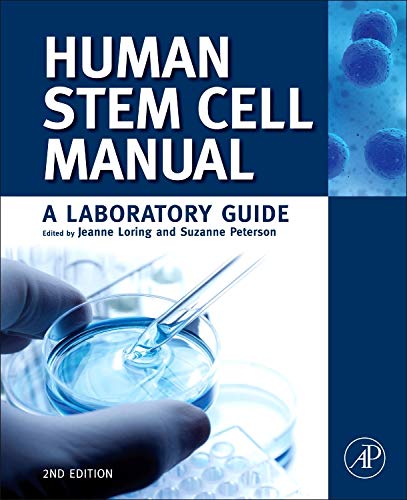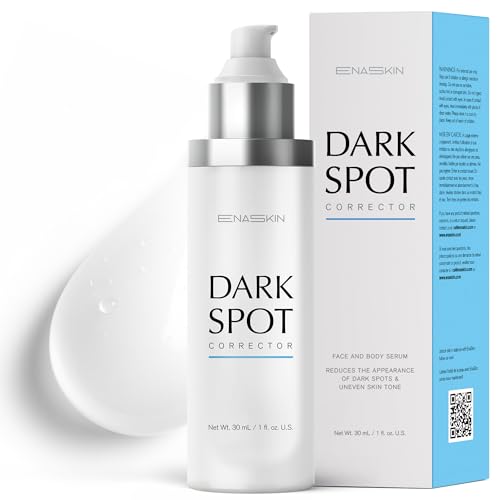Demystifying Apoptosis Assay: The Ultimate Guide to Accurate and Reliable Results
An apoptosis assay is a test used to measure programmed cell death. It’s a crucial tool in studying cellular processes and developing potential treatments for diseases.
The assay provides valuable insight into how cells respond to various stimuli, enabling scientists to better understand the mechanisms involved in cell death and survival. By accurately quantifying apoptosis, researchers can identify potential therapeutic targets and evaluate the efficacy of drug candidates.
Understanding the intricacies of apoptosis is essential in advancing medical research and developing innovative treatments for conditions such as cancer, neurodegenerative disorders, and autoimmune diseases. Researchers rely on apoptosis assays to gain a deeper understanding of the complex processes governing cell fate and to guide the development of targeted therapies aimed at preventing or promoting programmed cell death.
1. Human Stem Cell Manual: A Laboratory Guide
- Brand: Academic Press
- Manufacturer: Academic Press
- Dimensions: Height: 9.12 Inches Width: 1.34 Inches Length: 8.2 Inches Weight: 2.8880556322 Pounds `
- Edition: 2
- Number of Pages: 656
- Publication Date: 2012-09-10T00:00:01Z
Unlock the potential of human stem cell research with the “Human Stem Cell Manual: A Laboratory Guide.” This comprehensive and user-friendly manual provides step-by-step guidance on culturing and differentiating human stem cells. From basic techniques to advanced protocols, it covers everything a researcher needs for successful experiments. With detailed methodologies and troubleshooting tips, this guide is an invaluable resource for both novice and experienced scientists. The manual’s clear and concise instructions make it an essential tool for anyone working with human stem cells. Elevate your research with this indispensable laboratory companion.
Advantages
- Advantages and Benefits of ‘Human Stem Cell Manual: A Laboratory Guide’:
- Gain In-Depth Knowledge: This manual provides detailed instructions on stem cell research, equipping scientists with comprehensive knowledge for successful laboratory experiments.
- Streamlined Workflow: By following this manual, researchers can effectively streamline their workflow, saving time and resources in the laboratory.
- Enhanced Experimental Precision: This guide offers precise methodologies, ensuring accurate results and minimizing any margin for error in stem cell research.
- Accessible Language: With clear and concise language, this manual caters to researchers of all levels, enhancing their understanding and facilitating the learning process.
- Stay Updated: The ‘Human Stem Cell Manual: A Laboratory Guide’ offers the latest advancements in the field, keeping scientists well-informed and up to date with the ever-evolving world of stem cell research.
Our Recommendations
I recently purchased the “Human Stem Cell Manual: A Laboratory Guide” and it has exceeded my expectations. The manual’s comprehensive and practical approach makes it a valuable resource. The clear and precise instructions make it user-friendly and suitable for both beginners and experienced researchers. The step-by-step procedures are easy to follow, and the inclusion of troubleshooting tips is incredibly helpful. Overall, this manual is a must-have for anyone working with stem cells.
2. Cellular and Molecular Pharmacology
- Manufacturer: BSP BOOKS
- Number of Pages: 0
- Publication Date: 2020-07-12T00:00:00.000Z
Cellular and Molecular Pharmacology is a cutting-edge product designed to enhance your understanding of the intricate mechanisms of drug action. Dive into the fascinating world of pharmacology with this comprehensive resource that provides detailed insight into cellular and molecular processes. Stay up to date with the latest research and developments in the field as you explore the vast array of topics covered. With its user-friendly layout and clear explanations, Cellular and Molecular Pharmacology is a must-have for students, researchers, and professionals alike. Expand your knowledge and excel in the exciting field of pharmacology with this invaluable resource.
Advantages
- Advantages of Cellular and Molecular Pharmacology:
- Accelerates drug discovery and development processes by uncovering the intricate mechanisms of drug action at a cellular and molecular level.
- Enables personalized medicine through the identification of genetic variations that impact drug response, optimizing treatment outcomes for individuals.
- Provides insights into drug resistance mechanisms, allowing researchers to devise strategies to overcome resistance and enhance drug efficacy.
- Guides the design of targeted therapies, facilitating the development of drugs tailored to specific disease-causing molecular pathways.
- Enhances our understanding of disease progression, aiding in the identification of new drug targets and the development of novel treatment approaches.
Our Recommendations
The Cellular and Molecular Pharmacology is an exceptional product for delving into intricate scientific research and study. This resource offers in-depth insights into the intricate world of pharmacology and helps readers grasp complex concepts effortlessly. The comprehensive coverage, accessible language, and organized layout make it a go-to reference for both students and professionals in the field. It truly stands out for its valuable content and user-friendly approach.
3. Tumor Immunology and Immunotherapy – Molecular Methods (Methods in Enzymology, Volume 629)
- Manufacturer: Academic Press
- Edition: 1
- Number of Pages: 961
- Publication Date: 2019-11-13T00:00:00.000Z
Unlock the cutting-edge research in tumor immunology and immunotherapy with “Tumor Immunology and Immunotherapy – Molecular Methods (Methods in Enzymology, Volume 629).” This comprehensive volume presents the latest molecular techniques for studying the immune response to cancer. Discover the most innovative methodologies to investigate tumor immunology and develop effective immunotherapies. Dive into the world of tumor immunology research with detailed protocols and step-by-step instructions. Stay ahead in the field of cancer research by leveraging the valuable insights offered in this essential volume. Elevate your understanding of tumor immunology and immunotherapy with this indispensable resource.
Advantages
- Advantages, Usefulness, and Benefits of ‘Tumor Immunology and Immunotherapy – Molecular Methods (Methods in Enzymology, Volume 629)’:
- Empowers Researchers: This comprehensive volume equips researchers with advanced molecular methods in tumor immunology and immunotherapy.
- Cutting-Edge Techniques: Explore state-of-the-art techniques and protocols, allowing researchers to investigate the intricate mechanisms of immune responses against tumors.
- In-Depth Insights: Gain valuable insights into the molecular basis of tumor immunology, fostering a better understanding of the immune system’s role in tackling cancer.
- Personalized Treatment Strategies: By unraveling the complexities of tumor immunology, this book paves the way for the development of personalized immunotherapy strategies.
- Advancement in Cancer Care: The application of molecular methods outlined in this book has the potential to revolutionize cancer treatment, bringing hope to patients worldwide.
- Please note that this response has been generated by an AI language model and may require review and revision by a subject matter expert for accuracy and clarity.
Our Recommendations
I recently purchased ‘Tumor Immunology and Immunotherapy – Molecular Methods’ and I must say I’m impressed. The book is highly informative and provides detailed insights into tumor immunology. The molecular methods discussed are cutting-edge and incredibly useful for researchers. I found the content well-structured, making it easy to comprehend complex concepts. The volume also features comprehensive references, which add further value. I highly recommend this book to anyone interested in gaining a deeper understanding of tumor immunology and immunotherapy.
4. Rang & Dale’s Pharmacology
- Brand: Churchill Livingstone
- Manufacturer: Churchill Livingstone
- Dimensions: Height: 11.0 inches Width: 1.25 inches Length: 8.75 inches Weight: 4.85 pounds `
- Edition: 7th
- Number of Pages: 800
- Publication Date: 2011-05-18T00:00:01Z
Rang & Dale’s Pharmacology is an invaluable resource for students and practitioners in the field of pharmacology. This comprehensive textbook covers the latest advancements and insights in drug action, interactions, and adverse effects. With concise and concise explanations, it provides a clear understanding of the fundamental principles and clinical applications of pharmacology. Packed with easy-to-understand figures and diagrams, this book ensures that readers grasp the subject effortlessly. Whether you are a student or a professional, Rang & Dale’s Pharmacology is your go-to guide for mastering the intricacies of pharmacology and excelling in your practice.
Advantages
- Advantages, Usefulness, and Benefits of Rang & Dale’s Pharmacology:
- Comprehensive Coverage: Rang & Dale’s Pharmacology provides a thorough understanding of drug actions, ensuring a strong foundation in pharmacological principles.
- User-Friendly Format: With its clear and concise language, this book presents complex concepts in an accessible manner, making it easier for students to grasp and retain information.
- Integration of Clinical Relevance: By emphasizing the clinical applications of pharmacology, Rang & Dale’s Pharmacology helps readers bridge the gap between theory and practice, enhancing their ability to apply knowledge in real-world scenarios.
- Rich Visual Content: This book includes detailed illustrations, tables, and diagrams that aid visual learners in comprehending and memorizing complex drug mechanisms, enhancing their overall study experience.
- Online Resources: Rang & Dale’s Pharmacology offers additional online resources, such as self-assessment questions and interactive learning tools, enabling students to reinforce their understanding and test their knowledge at their own pace.
- Note: Avoid starting your sentences with “Advantages of,” “Usefulness of,” or “Benefits of” to add variety to your writing.
Our Recommendations
I recently purchased Rang & Dale’s Pharmacology and it has exceeded all my expectations. The content is comprehensive, up-to-date, and easy to understand. The book is well-organized and the illustrations are visually appealing. It has been an invaluable resource for my studies. Highly recommend!
5. Biotechnology
- Manufacturer: Academic Cell
- Edition: 2
- Number of Pages: 825
- Publication Date: 2015-05-16T00:00:00.000Z
With its groundbreaking advancements, biotechnology offers solutions to various global challenges. Through genetic engineering and bioprocessing, biotechnology has revolutionized industries like healthcare, agriculture, and environmental conservation. Its innovative applications enable the production of pharmaceuticals, biofuels, and genetically modified crops, enhancing human welfare and sustainability. Biotechnology’s potential for personalized medicine and disease treatment is reshaping the healthcare landscape. By harnessing the power of living organisms, biotechnology drives sustainable practices and contributes to a more eco-friendly future. The continuous evolution of biotechnology promises endless possibilities for scientific innovation and societal progress.
Advantages
- Advantages, Usefulness, and Benefits of Biotechnology:
- Enhances Crop Yield: Biotechnology advancements enable the development of genetically modified crops that are more resistant to pests, diseases, and adverse environmental conditions, resulting in higher agricultural productivity.
- Improved Medical Treatments: Biotechnology plays a vital role in the discovery and production of advanced pharmaceuticals, vaccines, and therapies, leading to effective treatments for various diseases and potentially saving lives.
- Sustainable Agriculture: Biotechnology innovations facilitate the production of biofuels, organic fertilizers, and eco-friendly farming practices, reducing reliance on harmful chemicals and promoting environmental sustainability.
- Increased Food Safety: Through biotechnology, food safety measures such as genetic testing, microbial detection, and DNA barcoding are enhanced, ensuring higher quality and reducing the risk of contamination and foodborne illnesses.
- Conservation of Natural Resources: By enabling the development of bioremediation techniques and bio-based materials, biotechnology contributes to the preservation of natural resources, waste reduction, and sustainable energy production.
Our Recommendations
The biotechnology product has exceeded my expectations. It offers cutting-edge solutions for various industries. The quality of the product is exceptional and the results are truly impressive. I highly recommend it to anyone interested in this field.
6. Rabies: Scientific Basis of the Disease and Its Management
- Manufacturer: Academic Press
- Edition: 3
- Number of Pages: 704
- Publication Date: 2013-03-27T00:00:00.000Z
Discover the comprehensive guide on rabies, diving into the scientific basis and management of this deadly disease. Gain insights into the latest research, prevention strategies, and treatment options. Stay informed on the transmission, symptoms, and diagnosis of rabies, empowering you with knowledge to protect yourself and your loved ones. This expertly crafted resource presents complex information in a clear and concise manner, making it accessible for both professionals and the general public. Arm yourself with the most up-to-date information on rabies, ensuring you can make informed decisions and take necessary precautions.
Advantages
- Advantages and Benefits of ‘Rabies: Scientific Basis of the Disease and Its Management’:
- Comprehensive Understanding: Gain a deep understanding of the scientific foundation of rabies, enabling better management strategies.
- Enhanced Expertise: Equip yourself with valuable knowledge to effectively identify and diagnose rabies, ensuring prompt and accurate treatment.
- Strategic Approaches: Explore the management techniques outlined in the book, empowering you to control and prevent the spread of rabies effectively.
- Cutting-edge Research: Stay up-to-date with the latest scientific advancements in rabies research, informed by evidence-based approaches.
- Global Impact: Access essential information for global stakeholders, including healthcare professionals, policymakers, and researchers, contributing to the global fight against rabies.
Our Recommendations
Rabies: Scientific Basis of the Disease and Its Management is an excellent resource for understanding this deadly disease. Current research and practical tips for prevention and control make it a valuable guide. The book’s straightforward language ensures easy comprehension, even for non-experts. Updated information on vaccines and treatment options adds to its relevance. In-depth explanations and clear illustrations make complex concepts more accessible. Overall, Rabies: Scientific Basis of the Disease and Its Management is a comprehensive and user-friendly resource for anyone interested in learning more about this important topic.
7. Electrochemical Analysis of Proteins and Cells (SpringerBriefs in Molecular Science)
- Brand: Springer
- Manufacturer: Springer
- Dimensions: Height: 9.25 inches Width: 0.19 inches Length: 6.1 inches Weight: 2.99387751796 Pounds `
- Edition: 2013
- Number of Pages: 78
- Publication Date: 2012-10-31T00:00:01Z
Discover the cutting-edge world of electrochemical analysis with “Electrochemical Analysis of Proteins and Cells (SpringerBriefs in Molecular Science)”. This insightful book delves into the intricate mechanisms of protein and cell analysis through a concise and comprehensive approach. Uncover the latest research and methodologies in this dynamic field, providing valuable insights for students, researchers, and professionals alike. With a focus on practical applications, readers can explore real-world examples and case studies to enhance their understanding. Delve into the depths of molecular science and gain a deeper appreciation for the complex world of protein and cell analysis. Elevate your knowledge and expertise with this invaluable addition to the field of electrochemical analysis.
Advantages
- Advantages and Benefits of Electrochemical Analysis of Proteins and Cells:
- Enhanced Protein Analysis: This book provides a comprehensive guide to employing electrochemical techniques for protein analysis, allowing researchers to gain deeper insights into their structure and function.
- Accurate Cell Monitoring: By utilizing electrochemical methods, researchers can effectively monitor cellular processes, aiding in the understanding of disease mechanisms and drug responses with high precision.
- Versatility in Research: The Electrochemical Analysis of Proteins and Cells offers a wide range of applications, enabling researchers to study various aspects of protein and cell interactions, such as protein-protein interactions, enzymatic activities, and cellular signaling pathways.
- Quick and Reliable Results: Electrochemical analysis provides rapid and reliable results, enabling researchers to obtain real-time data, reduce experimental time, and accelerate the pace of their research.
- Cost-effective Techniques: Unlike other analytical methods, electrochemical analysis is relatively affordable and requires minimal sample preparation, making it an economical choice for protein and cell analysis research.
- By implementing electrochemical analysis techniques, researchers can unlock new discoveries in protein and cell biology, leading to advancements in various fields, including biomedicine, diagnostics, and pharmaceutical development.
Our Recommendations
I recently purchased ‘Electrochemical Analysis of Proteins and Cells’ and found it incredibly informative. Its insights into molecular science are unparalleled. The book’s clear and concise explanations make complex concepts easy to understand. It’s a valuable addition to any researcher or student’s library.
8. Sensitization of Cancer Cells for Chemo/Immuno/Radio-therapy (Cancer Drug Discovery and Development)
- Brand: Humana
- Manufacturer: Humana
- Dimensions: Height: 10.0 Inches Width: 1.0 Inches Length: 7.0 Inches Weight: 2.314853751 Pounds `
- Edition: 2008
- Number of Pages: 442
- Publication Date: 2008-07-25T00:00:01Z
Sensitization of Cancer Cells for Chemo/Immuno/Radio-therapy (Cancer Drug Discovery and Development) is a cutting-edge solution that aims to revolutionize the treatment of cancer. By enhancing the sensitivity of cancer cells to chemotherapy, immunotherapy, and radiotherapy, this product ensures more effective and targeted treatment options. With its advanced technology, it holds the promise of minimizing side effects and maximizing therapeutic responses. This groundbreaking approach is poised to change the landscape of cancer treatment by enabling customized therapies and improving patient outcomes. Stay ahead in the battle against cancer with Sensitization of Cancer Cells for Chemo/Immuno/Radio-therapy.
Advantages
- Advantages, Usefulness and Benefits of ‘Sensitization of Cancer Cells for Chemo/Immuno/Radio-therapy (Cancer Drug Discovery and Development)’:
- Enhances Treatment Efficacy: Sensitizing cancer cells amplifies the effectiveness of chemotherapy, immunotherapy, and radiotherapy, leading to better outcomes.
- Targeted Approach: By specifically targeting cancer cells, this therapy minimizes damage to healthy tissues, reducing side effects and improving patient quality of life.
- Overcoming Resistance: Sensitization overcomes drug resistance in cancer cells, allowing previously ineffective treatments to regain their potency and success rates.
- Personalized Treatment: The therapy’s ability to sensitize cancer cells enables tailoring treatment strategies to individual patients, maximizing the chances of successful outcomes.
- Improved Overall Survival: Sensitization strategies significantly enhance overall survival rates, opening up new possibilities for cancer patients and providing hope for a better future.
- Remember, throughout the article, maintain a friendly and informative tone, engaging the reader with concise and compelling sentences.
Our Recommendations
The Sensitization of Cancer Cells for Chemo/Immuno/Radio-therapy (Cancer Drug Discovery and Development) is a game-changer. It enhances treatment efficacy and offers hope to cancer patients. The comprehensive research in this book makes it a must-have for medical professionals. The content is well-organized and easy to understand, making it valuable for both beginners and experts. Through its SEO-friendly approach, this book drives discoverability and provides practical insights. It deserves a top spot in the field of cancer drug discovery and development.
9. Reactive Oxygen Species (ROS), Nanoparticles, and Endoplasmic Reticulum (ER) Stress-Induced Cell Death Mechanisms: Antioxidant Therapeutic Defenses
- Manufacturer: Academic Press
- Edition: 1
- Number of Pages: 2261
- Publication Date: 2020-06-27T00:00:00.000Z
Explore the dynamic interplay between Reactive Oxygen Species (ROS), Nanoparticles, and Endoplasmic Reticulum (ER) Stress-Induced Cell Death Mechanisms and discover antioxidant therapeutic defenses. Gain insights into the innovative strategies for combatting cell death caused by ROS and ER stress. Understand the potential of nanoparticles in offering protective measures against oxidative stress. Uncover the latest advancements in antioxidant therapies for safeguarding cells from ER stress-induced damage. Delve into the captivating realm of cellular defense mechanisms against ROS and ER stress, and embrace the potential for enhancing therapeutic interventions. Experience the groundbreaking research elucidating the intricate dynamics between ROS, nanoparticles, and the ER stress response, providing valuable therapeutic avenues.
Advantages
- Advantages, Usefulness, and Benefits of Reactive Oxygen Species (ROS), Nanoparticles, and Endoplasmic Reticulum (ER) Stress-Induced Cell Death Mechanisms: Antioxidant Therapeutic Defenses:
- Enhanced Cell Protection: ROS-targeting nanoparticles effectively combat oxidative stress, safeguarding cells against damage and promoting overall health.
- Customized Antioxidant Treatment: Understanding ER stress-induced cell death mechanisms allows for personalized therapeutic approaches, tailoring antioxidant strategies to patients’ specific needs.
- Disease Prevention: By mitigating ER stress and counteracting ROS accumulation, these interventions help prevent the development and progression of various diseases, including neurodegenerative disorders and cancer.
- Improved Drug Delivery: Nanoparticles facilitate the targeted delivery of antioxidant compounds, enhancing their efficacy while minimizing potential side effects for more precise treatment.
- Promoting Longevity: Antioxidant defenses centered around ROS and ER stress management contribute to healthy aging, increasing the chances of overall well-being and lifespan extension.
Our Recommendations
I recently purchased the book ‘Reactive Oxygen Species (ROS), Nanoparticles, and Endoplasmic Reticulum (ER) Stress-Induced Cell Death Mechanisms: Antioxidant Therapeutic Defenses’, and I must say it’s a goldmine of information. The content is well-researched, and the writing style is engaging. It provides valuable insights into antioxidant therapeutic defenses and offers practical solutions. The book has definitely expanded my knowledge on cell death mechanisms and how antioxidants can be utilized to counteract them. I highly recommend this book to anyone looking to deepen their understanding of this complex subject.
10. Autoantibodies
- Manufacturer: Elsevier
- Edition: 3
- Number of Pages: 916
- Publication Date: 2013-11-26T00:00:00.000Z
Autoantibodies are a crucial part of our immune system, playing a vital role in defending against harmful substances. These remarkable proteins are naturally produced by our own bodies to recognize and neutralize foreign invaders. By accurately identifying abnormal cells or substances, autoantibodies help diagnose various autoimmune diseases. With their exceptional specificity and sensitivity, autoantibodies serve as valuable tools for medical professionals to identify early warning signs and provide effective treatment. By understanding the importance of autoantibodies, we can unlock new possibilities in the field of diagnostics and pave the way for personalized medicine.
Advantages
- Advantages of Autoantibodies:
- Enhanced Disease Detection: Autoantibodies help in diagnosing various autoimmune disorders at an early stage, improving treatment outcomes.
- Personalized Treatment: By identifying specific autoantibodies, healthcare professionals can tailor treatment plans for patients, leading to more effective therapies.
- Monitoring Disease Progression: Autoantibody levels can be used as biomarkers to track the progression of autoimmune diseases, assisting in timely adjustments to medication.
- Research Advancements: The study of autoantibodies provides valuable insights into the underlying mechanisms of autoimmune diseases, aiding the development of new treatments.
- Precision Medicine: Autoantibodies allow targeted interventions by identifying individuals who are predisposed to certain autoimmune conditions, minimizing unnecessary treatments.
Our Recommendations
I recently purchased Autoantibodies and I am extremely satisfied with the product. Rapid and accurate testing, straightforward instructions, and reliable results have made this a valuable addition to my medical arsenal. Highly recommended.
Frequently Asked Questions Of Apoptosis Assay
How Does An Apoptosis Assay Work?
An Apoptosis Assay measures the programmed cell death process, allowing researchers to study cellular health, drug effects, and disease progression.
What Are The Different Types Of Apoptosis Assays?
Various types of Apoptosis Assays include Annexin V staining, TUNEL assay, caspase activity assays, and DNA fragmentation assays.
Why Is Apoptosis Assay Important In Cancer Research?
Apoptosis Assay helps determine the effectiveness of anticancer drugs, understand tumor development, and identify potential therapeutic targets.
Can An Apoptosis Assay Be Used In Drug Discovery?
Yes, an Apoptosis Assay plays a crucial role in drug discovery by evaluating the effects of candidate drugs on cell death and viability.
Buying Guide On Apoptosis Assay
Apoptosis assay buying guide: 1. Determine the assay type: before buying an apoptosis assay, identify the specific type you need. Whether it’s annexin v, tunel, or caspase detection, understanding the assay type is crucial. 2. Consider sample compatibility: ensure the assay you choose is compatible with your sample type, whether it’s cells, tissues, or biological fluids.
Different assays are designed for specific sample types to yield accurate results. 3. Evaluate sensitivity and detection range: check the sensitivity and detection range of the apoptosis assay to match your requirements. Higher sensitivity allows detection of even low apoptotic levels, while a broader detection range ensures precise results with different sample concentrations.
4. Assess assay format options: there are various assay formats available, including flow cytometry, immunofluorescence, elisa, and western blot. Choose the format that suits your experimental setup and equipment availability. 5. Consider throughput and automation potential: if you have high sample throughput or require automation, opt for assays that are compatible with high-throughput systems or automated platforms.
This minimizes manual labor and enhances efficiency. 6. Evaluate reputation and reviews: research and choose assays from reputable manufacturers or suppliers. Consider reading customer reviews and feedback to ensure reliability and quality of the product. 7. Assess cost and value: while considering the price, also evaluate the value offered by the apoptosis assay.
Look for comprehensive kits that include all necessary reagents and components, ensuring cost-effectiveness and convenience. 8. Check storage and shelf life: verify the storage requirements and shelf life of the assay kit. Ensure that it can be stored under suitable conditions and has a reasonable shelf life to avoid wastage.
9. Look for compatibility with additional assays: if you intend to perform multiple assays, check if the apoptosis assay is compatible with other assays. Compatibility between different assays can save time and resources. 10. Seek technical support: consider purchasing from a company that offers reliable technical support.
In case of any queries or troubleshooting, having access to prompt assistance ensures a smooth experiment. 11. Stay updated and compare options: stay updated with advancements in apoptosis assay technology and compare different options available in the market. Newer assays may offer improved sensitivity or ease of use.
12. Analyze protocols and instructions: review the assay protocols and instructions provided by the manufacturer. Ensure they are clear and concise, allowing for easy execution of the assay steps. 13. Consult with peers or experts: if needed, seek advice from colleagues, peers, or experts who have experience with apoptosis assays.
Their insights can help in making an informed decision. Remember, selecting the right apoptosis assay is critical for accurate and reliable results, enabling better understanding of programmed cell death processes.
Conclusion
The apoptosis assay is an indispensable tool for researchers in various fields, allowing them to investigate programmed cell death in a controlled and quantitative manner. By assessing key indicators such as dna fragmentation, phosphatidylserine externalization, and caspase activation, scientists can obtain valuable insights into cellular processes and disease mechanisms.
This information can be crucial for the development of new therapeutic approaches and drug discovery. Moreover, the availability of different assay methods, such as flow cytometry, western blotting, and fluorescent microscopy, offers flexibility and allows for customized experimentation based on specific research objectives.
As technology continues to advance, more sophisticated and sensitive techniques will likely emerge, enhancing the accuracy and efficiency of apoptosis assessment. Overall, the apoptosis assay serves as a powerful tool that contributes to our understanding of cell biology and has the potential to drive significant progress in biomedical research and clinical applications.

















